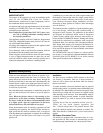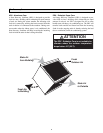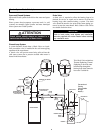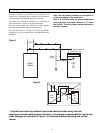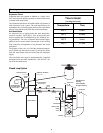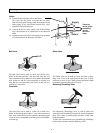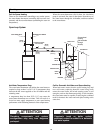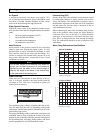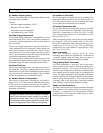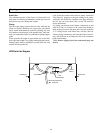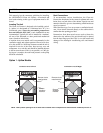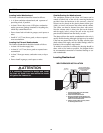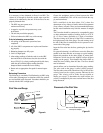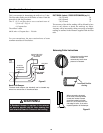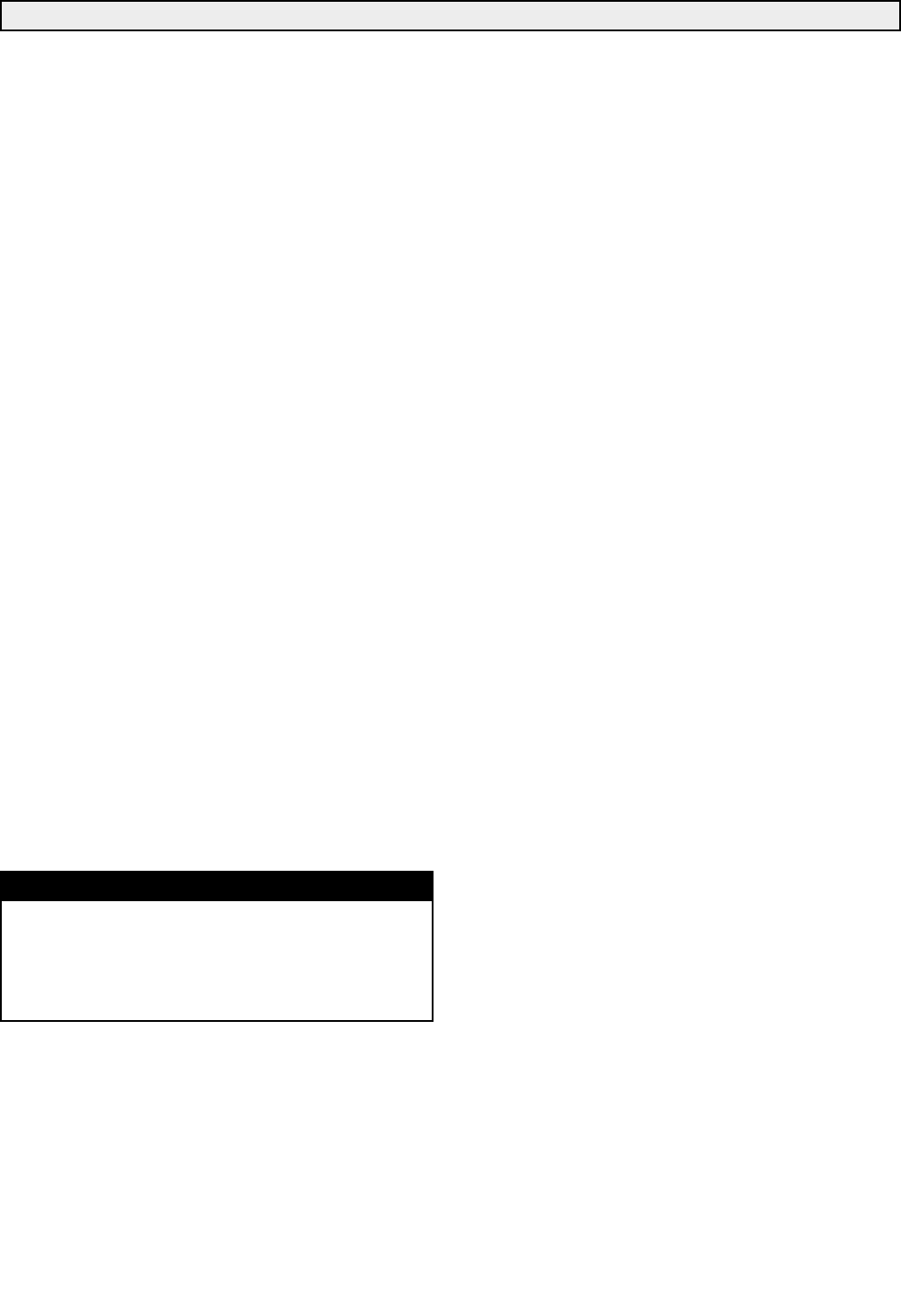
12
Air Handler Output Capacity
There are four factors that will significantly affect the heat-
ing output of the air handler.
They are:
• Hot water supply temperature (EWT)
• Hot water flow rate (GPM)
• Air Handler return air temperature
• Air Handler air flow rate (CFM)
Hot Water Supply Temperature
The hot water supply temperature is controlled by the water
heater thermostat. This is set by the installing contractor to
provide the required temperature at the hot water outlet of
the water heater.
The hot water supply temperature is typically 140°F (60°C).
If this temperature must be increased to achieve higher out-
puts from the furnace an anti-scald valve must be used to
prevent domestic hot water temperatures above 140°F
(60°C). The manufacturer of the Hot water Tank should be
consulted for temperatures higher than 140°F.
It is important that a warning label be placed near the water
heater thermostat telling the homeowner not to change the
thermostat setting. The label is included with the furnace.
Hot Water Flow Rate
The hot water entering the water coil is the source of heat to
the air handler. The effect of changing the amount of water
entering the coil is the same as changing the water tempera-
ture. As water flow is reduced, the output of the air handler
and the air temperature rise will both be lowered.
Air Handler Return Air Temperature
The return air temperature entering the air handler is
approx. 60°F (33°C) below the hot water inlet temperature.
If the return air temperature entering the air handler is
reduced, more heat transfer will occur and the output of the
air handler will increase.
Air Handler Air Flow Rate
The air entering the air handler can only be warmed by the
temperature difference between the hot water and the cool
air. As the volume (CFM (L/s)) of air is reduced, the amount
of heat which can be transferred is also reduced.
Air Handler Temperature Rise
In a fuel fired furnace, the combustion gases can be 1000°F
(538°C) above the return air temperature. These units typi-
cally have a temperature rise from 50°F (10°C) to 90°F
(32°C) and therefore delivers air at the diffuser at 120°F
(49°C) to 160°F (71°C).
With an Integrated Combo System, the hot water tempera-
ture is approx. 130°F (54°C) which is 60°F (15.5°C) above
the return air temperature. These units typically have a tem-
perature rise of 35°F (2°C) to 40°F (4°C) and therefore
would deliver air at the diffuser at approximately 105°F
(40.5°C) to 110°F (43°C).
Room Thermostat
The room thermostat controls both the water
circulation pump and the air circulation fan. It should be on
a centrally located, inside wall away from any source of
heat such as diffusers, appliances and direct sunlight.
Energy Saving Room Thermostat
A set back thermostat or “smart stat” can be used with a
combo system, but care must be taken in the timing of the
temperature changes. The timing of morning warm up
should be early enough that the desired air temperature has
been reached before the people begin to use domestic hot
water. The highest demand for space heating is during the
morning warm up and the highest demand for domestic hot
water is during morning showers. Even if the water heater
is properly sized, it may not be able to meet this combined
load. Therefore, large set backs should be avoided.
Design vs. Field Conditions
The factors discussed between design parameters and actual
field conditions can impact greatly on output capacity.
Therefore, it is important to do a thorough and complete
commissioning of the integrated combo system to ensure
the design parameters are met.
Plumbing
NOTE
Although the water in the combo system is pressur-
ized by the domestic water system the pump is
required to create water flow in the heating loop.
The domestic water system applies the same pres-
sure to the supply and return sides of heating loop.



